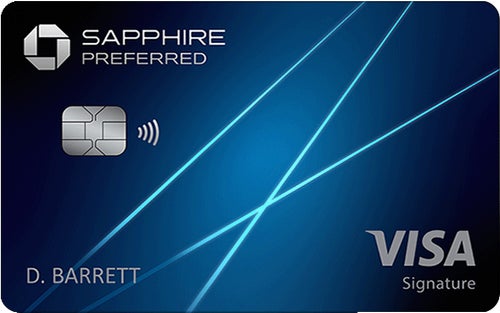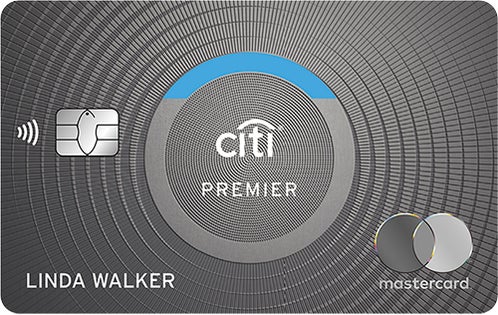| Balance Transfer Rating: | 2.5 / 5 |
| Promotional offer | 1.0 |
| Net value | 3.1 |
| Features | 4.5 |
| Issuer Customer Experience | 3.0 |
In a Nutshell:
While it doesn’t carry the most generous balance transfer offer, the PenFed Pathfinder Rewards card is one of the few travel rewards cards that can help you chip away at debt.
0% Promotional Period For Balance Transfers 12 months on balance transfers made in the first 90 days after account opening |  |
Transfer Fee 3% |  |
Promotional Purchase APR None |  |
Regular APR 17.99% Variable |  |
Annual Fee $95 ($0 if you qualify for PenFed Honors Advantage)* |  |
Customer Experience
|  |
Other notable features: $100 annual domestic air travel ancillary statement credit, Global Entry / TSA Precheck statement credit, Priority Pass lounge membership, promotional APR on balance transfers, extended warranty, car rental insurance, roadside dispatch, Visa Signature perks
| Rewards Rating: | 4.1 / 5 |
| Rewards Value | 4.1 |
| APR | 5.0 |
| Rewards Flexibility | 3.0 |
| Features | 3.0 |
| Issuer Customer Experience | 3.0 |
In a Nutshell:
The PenFed Pathfinder Rewards Visa Signature card comes with lucrative travel credits and a rewards scheme that favors travel purchases.
Rewards Rate
|  |
Sign-Up Bonus 50,000 bonus points after spending $3,000 in the first 90 days |  |
Annual Bonus
|  |
Annual Fee $95 ($0 if you qualify for PenFed Honors Advantage)* |  |
Average Yearly Rewards Value (estimate, including sign-up bonus averaged over three years, annual credits and $1,325 monthly spend) $653 |  |
APR 17.99% Variable |  |
Customer Experience
|  |
Other notable features: $100 annual domestic air travel ancillary statement credit, Global Entry / TSA Precheck statement credit, Priority Pass lounge membership, promotional APR on balance transfers, extended warranty, car rental insurance, roadside dispatch, Visa Signature perks
Though it’s not an especially popular or well-known travel credit card – likely because it’s only available to PenFed credit union members – the PenFed Pathfinder Rewards Visa Signature Card is not a rewards card you’ll want to sleep on.
Not only will you enjoy a better-than-average rewards rate on both travel and general purchases with the PenFed Pathfinder Rewards card, but you can also score a solid sign-up bonus and take advantage of hundreds of dollars’ worth of valuable travel benefits from day one. On top of that, the card comes with a promotional APR on balance transfers – a rare offering on a card in this category – which could help you save money as you consolidate and pay down debt.
That said, the card’s annual fee (which applies if you’re not a PenFed Honors Advantage member)* will only make sense if you spend heavily on travel. Many no annual fee travel cards offer comparable flat rates on general purchases or bonus rates in more practical categories like groceries and dining.
See related: Best travel credit cards for beginners
Earning points
The PenFed Pathfinder Rewards Visa Signature Card carries solid rewards rates on travel and everyday purchases, making it worth a look as an all-purpose rewards card for frequent travelers, commuters and families on the go.
To start, you’ll earn 3 points per dollar on travel and 1.5 points per dollar on all other purchases. If you’re a PenFed Honors Advantage member, you’ll get even more value thanks to a boosted rewards rate of 4 points per dollar on travel purchases. You can qualify for this program through eligible military service or by opening or having a PenFed Access America checking account.
Four points per dollar on travel is a terrific rewards rate (3 points per dollar for non members), beating out the rate you’ll find on many of the top competing travel rewards cards. Two of the best travel cards, the Chase Sapphire Preferred® Card and Capital One Venture Rewards Credit Card, for example, only offer 2 points or 2 miles per dollar on general travel purchases, respectively.
Point values make all the difference, though, and since PenFed uses dynamic award pricing, the average value of PenFed points can be tough to pin down. While both Chase and Capital One give you a clear idea of how much your points are worth (1.25 cents per point with the Sapphire Preferred card when redeemed for Chase travel, 1 cent per mile with the Venture card when redeemed for any travel purchase), PenFed point values vary based on the details of your award booking.
Some users report average point values as high as 1.7 cents per point, but even if we assume PenFed points are worth just 1 cent apiece on average when redeemed for travel (the industry standard), the PenFed Pathfinder Rewards card should offer a better return on travel spending than these cards. For example, $2,500 in general travel purchases (at 2 points per dollar) with the Sapphire Preferred card would earn 5,000 Ultimate Rewards points, worth $62.50 in travel with Chase. If we assume a 1-cent-per-point value for PenFed points, a cardholder who is not an Honors Advantage member would earn 7,500 points, worth $75 in travel, on the same spend with the PenFed Pathfinder Rewards card.
The card’s travel category is also very broad: Purchases that count as travel with the PenFed Pathfinder Rewards card include commuter transportation, ferries, tolls, bridge fees, passenger railways, lodging, taxis, ridesharing, limousines, trailer parks, campgrounds, buses, car rentals, cruises, steamships, tourist attractions, airfare, travel agencies, tour operators and more.
Meanwhile, the card’s rewards rate on general purchases stands out as especially impressive. Most rewards cards offer either a single flat-rate on all purchases or a bonus rewards rate in specific categories and just 1 point per dollar on general purchases. The PenFed Pathfinder Rewards card gets you the best of both worlds by offering bonus rewards on travel and a flat rate of 1.5 points per dollar on all other spending.
Since even frequent travelers will likely spend more on everyday purchases like groceries, dining and gas than on airfare, an extra half-point-per-dollar can make a big difference in the long run.
PenFed Pathfinder Rewards spending example
To get an idea of how much you can earn with the card, let’s assume you’re an infrequent traveler and can redeem your PenFed Pathfinder rewards for travel at an average value of 1 cent per point. If you take five flights per year at an average cost of $250 and spend $14,650 per year on all other purchases, you’ll earn 25,725 points, worth around $257 in travel. Subtract the $95 annual fee (assuming you’re not a PenFed Honors Advantage member) and this total drops to about $162.
While that’s not bad, it’s less than you’d earn with some no annual fee or flat-rate travel cards. If you’re only looking at rewards earned via card spend – not travel perks or credits – both the Capital One Venture (with a $95 annual fee) and the Capital One VentureOne Rewards Credit Card (with no annual fee) beat out the PenFed Pathfinder Rewards with this assumed spending breakdown.
However, if you’re a PenFed Honors Advantage member, the card will offer great value even on a small travel spend, since you’ll get a boosted 4-point-per-dollar rate on travel and won’t have to pay an annual fee*. Assuming the same spending breakdown, you’d earn 26,975 points, worth around $270.
| Card | Rewards calculation | Estimated total |
|---|---|---|
| PenFed Pathfinder Rewards card | ($1,250 in travel x 3 points per dollar) + ($14,650 in general spending x 1.5 points per dollar) x 1 cent per point value – $95 annual fee = | $162 |
| PenFed Pathfinder Rewards card (Honors Advantage member) | ($1,250 in travel x 4 points per dollar) + ($14,650 in general spending x 1.5 points per dollar) x 1 cent per point value = | $270 |
| Capital One Venture card | $15,900 x 2 miles per dollar x 1 cent per mile value – $95 annual fee = | $223 |
| Capital One VentureOne card | $15,900 x 1.25 miles per dollar x 1 cent per mile value = | $199 |
As you can see, being an Honors Advantage member is key if you want to maximize this card’s value. Even if you’re not a member, however, things eventually even out if you substantially increase the amount of money you spend on travel. For example, if you kept the same general spending but instead spent $9,000 on travel per year, you’d earn more with the PenFed Pathfinder Rewards card, even with the annual fee and standard rewards rate.
| Card | Rewards calculation | Estimated total |
|---|---|---|
| PenFed Pathfinder Rewards card | ($9,000 in travel x 3 points per dollar) + ($14,650 in general spending x 1.5 points per dollar) x 1 cent per point value – $95 annual fee = | $395 |
| PenFed Pathfinder Rewards card (Honors Advantage member) | ($9,000 in travel x 4 points per dollar) + ($14,650 in general spending x 1.5 points per dollar) x 1 cent per point value = | $580 |
| Capital One Venture card | $23,650 x 2 miles per dollar x 1 cent per mile value – $95 annual fee = | $378 |
| Capital One VentureOne card | $23,650 x 1.25 miles per dollar x 1 cent per mile value = | $296 |
Travel cards aren’t just about rewards earned via card spend, however. You also have to factor in the value of a card’s perks, and the PenFed Pathfinder Rewards offers a decent list.
Jump to: Card perks
Redeeming points
When it comes time to use your points, the PenFed Pathfinder Rewards card gives you a few options to choose from, but it doesn’t offer the most flexible redemption scheme. Along with redeeming rewards for travel, you can trade your points for gift cards or merchandise through the issuer’s shopping portal.
The value you get out of your points will vary, but travel redemptions will almost certainly give you the best bang for your buck, as non-travel redemptions will typically offer less than 1 cent per point in value. You’ll need a minimum of 1,000 points to make a rewards redemption.
Another notable downside is that the PenFed Pathfinder Rewards card doesn’t let you transfer your points to airline or hotel partners or redeem points to cover outside travel purchases like some other travel credit cards do. For example, the Chase Sapphire Preferred lets you transfer points to over 10 travel partners, sometimes at a higher point value, while the Venture card lets you redeem miles to cover any travel purchase, not just toward bookings through the Capital One portal.
Current sign-up bonus
As a new PenFed Pathfinder Rewards cardholder, you can earn 50,000 bonus points if you spend $3,000 with your new card within 90 days of your account opening. Though exact redemption values will depend on your travel dates and other specifics of your booking, we estimate this bonus could be worth anywhere from $500 in travel (assuming a 1-cent-per-point redemption value) to $850 in travel (assuming a 1.7-cent-per-point redemption value).
This is a generous offer – even if we assume a lower redemption value of 1 cent per point – and beats out a fair number of rewards cards in our database. And since the PenFed Pathfinder Rewards card is available at no annual fee for PenFed Honors Advantage members, it scores extra points. While you may be able to get a more generous bonus offer with a mid-tier travel rewards card or airline card, this bonus will be hard to beat without paying an annual fee.
See related: Best credit card sign-up bonuses
Card rates and fees
PenFed Honors Advantage members who can get this card at no annual fee will enjoy the most value, but even with a $95 annual fee, the PenFed Pathfinder Rewards card is fairly low cost considering the card carries valuable perks that help offset its fee and charges no foreign transaction fees (many cards charge a 3% fee for every purchase you make overseas).
For balance transfers made in the first 90 days after account opening, you’ll also get a chance to take advantage of a 0% promotional APR for 12 months (after which a fixed APR of 17.99% applies). While a 12-month promotional APR period is on the low end compared to most dedicated balance transfer credit cards, it’s very rare to find zero-interest balance transfer offers on travel credit cards. Outside of the balance transfer offer, the card’s ongoing APR is reasonable (17.99% variable), with the high end only a bit above the national average credit card APR.
This could give the PenFed Pathfinder Rewards card a big advantage over competing cards if you need some breathing room to chip away at existing debt. The card should also hold more long-term value than the typical balance transfer card since you’ll continue to earn rewards and enjoy travel perks long after you’ve finished paying off your balance. The card’s balance transfer fee of 3% is about average as well.
If you happen to slip up and pay late, the card also carries a more forgiving late fee of up to $20 to $28 – very low compared to the up to $40 late fee you’ll find on many cards.
Card perks
The PenFed Pathfinder Rewards card offers a solid set of perks for a mid-tier (and potentially no annual fee) travel card, including valuable travel credits and lounge access at a reduced cost. Here are some highlights:
- $100 domestic air travel statement credit – Each year you’ll get a $100 statement credit you can use to cover ancillary travel expenses on domestic flights, including baggage fees, lounge access and in-flight purchases like food, drinks and Wi-Fi.
- Credit for Global Entry or TSA PreCheck – You’ll get a statement credit of up to $100 for your Global Entry or TSA PreCheck application fee when you pay with the card.
- Priority Pass Select airport lounge membership – The card comes with a complimentary Priority Pass membership that gets you access to more than 1,300 lounges worldwide.
- Visa Signature benefits – You’ll enjoy practical benefits like car rental insurance and extended warranty coverage, as well as more niche perks like Visa Signature Concierge Services and discounts on experiences like luxury car rentals and wine country excursions.
While this list should offer good value for semi-frequent travelers (nearly $300 worth of savings via the included credits and membership alone), it may fall flat if you’re looking for more luxury travel perks.
In that case, consider a higher-tier travel rewards or airline card like the Chase Sapphire Reserve®, which – in exchange for a $550 annual fee – comes with top-notch benefits like a $300 annual credit toward travel purchases and complimentary access to Priority Pass lounges for you and two guests.
See related: Best credit cards for lounge access
How does the PenFed Pathfinder Rewards card compare to other rewards credit cards?
While the PenFed Pathfinder Rewards card comes with an impressive rewards rate on travel and general purchases and charges no annual fee for PenFed Honors Advantage members, its rewards redemption scheme isn’t the most flexible. A few general travel cards offer comparable ongoing value as well as more options for redeeming rewards or transferring to other hotel and airline loyalty programs. Here are a few alternatives to consider:
 |  |  (The Citi Premier Card is no longer available) |
Rewards rate
| Rewards rate
| Rewards rate
|
| Welcome bonus | Welcome bonus | Welcome bonus
|
| Annual fee $95 | Annual fee $95 | Annual fee $95 |
Other things to know
| Other things to know
| Other things to know
|
Chase Sapphire Preferred
While you won’t be able to avoid an annual fee, the Chase Sapphire Preferred should prove a much more flexible travel rewards card than the PenFed Pathfinder. Along with a solid rewards rate on dining and general travel purchases, the card is currently offering 60,000 points after spending $4,000 in the first 3 months, worth $750 when redeemed for travel through Chase Travel℠. You’ll enjoy a ton of variety in how you can use your points, including for statement credits, gift cards and more at a 1-cent-per-point value or for travel through the Chase Travel℠ portal at a 25% higher point value. You can also transfer your points to a number of travel partners and easily pair the card with other Chase rewards cards to maximize your earnings across a wide range of spending categories, not just travel.
Capital One Venture card
If you want to keep things extra simple while still enjoying terrific value, the Capital One Venture is one of your best options. The card’s flat-rate rewards make it easy to save up miles for your next vacation, and the annual fee should be no trouble to offset, even for modest spenders. Indeed, if you spend just $396 per month with the card, you’ll cover the annual fee. The Venture card should also offer more flexibility than the PenFed Pathfinder, since you can not only redeem rewards for travel through Capital One, but also to cover outside travel purchases with airlines, hotels and third-party site like Expedia.
Citi Premier Card – (The Citi Premier Card is no longer available)
The Citi Premier card is a terrific choice if you want to cover a range of everyday spending categories with a single card while earning travel points. The card gets you an impressive 3 points per dollar at restaurants, supermarkets, gas stations, hotels and air travel, offering a level of versatility that blows most competing mid-tier travel cards out of the water. While it lacks many of the perks and credits you’ll find on the PenFed Pathfinder Rewards card, it gives you the option of transferring your rewards to travel partners, which could help you stretch the value of your points further.
Who should get the PenFed Pathfinder Rewards card?
- PenFed members who spend a lot on travel purchases
- Military members or PenFed checking customers who can qualify for the PenFed Honors Advantage program to earn more points and avoid the annual fee
- Cardholders who don’t plan to transfer their points to airline and hotel programs
- Cardholders who want some basic travel benefits like expedited airport security, but don’t need a ton of luxury perks
- Cardholders who need to transfer and chip away at a balance, but want a card that will offer long-term value even after they’ve paid off their debt
How to use the PenFed Pathfinder Rewards card
- Spend $3,000 within 90 days of account opening to earn the 50,000 bonus points
- Sign up for a PenFed Access America checking account to enjoy the benefits of the PenFed Honors Advantage program (including no annual fee and a boosted rewards rate on travel)
- Apply for Global Entry or TSA Precheck with your credit card to secure the fee credit
- Use your card to cover ancillary fees like baggage fees on domestic airlines to take advantage of the $100 credit
Is the PenFed Pathfinder Rewards card worth it?
The PenFed Pathfinder Rewards is absolutely worth it if you’re a PenFed Honors Advantage member who spends heavily on travel. The card’s rewards rate on travel purchases is one of the best out there and its rate on general purchases is better than average. Add in a handful of useful travel perks and you should easily squeeze hundreds of dollars’ worth of ongoing value out of this card.
However, if you’re not an Honors Advantage member, you’ll need to spend a ton on travel for this card to be your best option – you’d probably be better off with a more flexible flat-rate or no annual fee travel card.
*If you were not eligible at account opening but subsequently become eligible, the annual fee will be waived on your next and each anniversary. If at any time you fail to meet the eligibility requirement, you will no longer be eligible for the waiver.
All reviews are prepared by CreditCards.com staff. Opinions expressed therein are solely those of the reviewer and have not been reviewed or approved by any advertiser. The information, including card rates and fees, presented in the review is accurate as of the date of the review. Check the data at the top of this page and the bank’s website for the most current information.
Responses to comments in the discussion section below are not provided, reviewed, approved, endorsed or commissioned by our financial partners. It is not our partner’s responsibility to ensure all posts or questions are answered.
